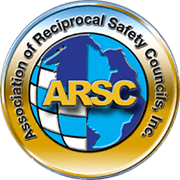By Connie Fabre, President & CEO, Greater Baton Rouge Industry Alliance (GBRIA)
Have you ever heard someone ask this question? Most people working in industry enjoy the prosperity that their jobs have brought to them and their families, however when people claim that industrial jobs are unsafe or that industry is harming our environment, some might wonder whether there is any merit to these claims. Although the vocal few speaking against industry can cause people to question, the data does not support their claims.
When it comes to safe jobs, industrial plant, maintenance, and construction work fare better than working for many service jobs. The Total Recordable Injury Rate (TRIR) number measures the number of people who sustain a non-fatal injury among 200,000 hours worked. In the U.S. in 2019 (the latest information available from the Occupational Safety and Health Administration), petroleum refiners averaged a 0.4, down from 0.7 in 2018, while manufacturing as a whole averaged 3.3. As a comparison, retailers averaged 3.4, hospitals 5.5, and state and local government 4.6. So, how does the petrochemical industry achieve such a good record? Sharing best practices, tackling common issues through associations and organizations such as ARSC, is a hallmark of this industry, however, it is each company and each employee’s attitude and focus on safety that makes the difference. Companies expend incredible resources to ensure that employees meet daily, complete Job Safety Analyses, Hazard Analyses, and training upon training in every aspect of hazards possible and how to avoid injury. Companies have pep rallies for safety and are unrelenting in convincing employees to believe that “ZERO incidents” is an achievable goal.
The communities in which industrial facilities are located also fare well in health outcomes. For example, in looking at the 2020 County Health Rankings Key Findings Report1 it shows that often, overall health outcomes in industrial parishes fare better than rural parishes in Louisiana and Texas. Although I am no health scientist, I know that there are many factors contributing to cancer and overall health outcomes. I believe that the presence of industrial plants seems to have more positive effects on health than negative effects.
Remember our Industrial Hygienists? They are scientists and engineers committed to protecting the health and safety of people in the workplace and the community2. One of the duties of Industrial Hygienists at industrial facilities is to place monitoring equipment on employees at regular intervals to test for any chemicals that could cause a health issue. If plants were emitting amounts that caused problems for people, their own employees would be identified first. Don’t you think that if industrial employees, who go into plants every day for years upon years, were getting diseases at a rate greater than the general population, someone would have noticed? In fact, employee data has been used to identify problems, and industry has self-disclosed to protect others. One could say that the communities on the fence lines of industrial facilities are protected by the thousands of employees, suppliers and contractors working inside industrial plants every day because the employees provide the data to show that exposure to what is being manufactured is safe. The fact that lower cancer rates are seen in counties/parishes that have significant numbers of industrial facilities located there 2,3 versus counties/parishes that are rural or simply heavily populated, should give pause to people critical of industry.
In addition to providing good jobs, industrial companies do much to support and invest in the communities in which they locate. From whooping crane reintroduction to Certified Wildlife Habitats, and cattle and farming on plant property, the land and wildlife next to plants is thriving. Industrial companies sponsor many United Way and other charity programs, community health and wellness fairs, festivals, music groups, schools and much more as a means to ensure that people in their communities thrive as well.
Maybe it’s my “rose colored glasses” or the statistics I’m reading but it seems to me whether it’s health and wellness outcomes, sales and property taxes, or other factors that make a community thrive, the presence of industrial facilities seems to improve the quality of life, much to the chagrin of the vocal few who try to use false claims and fear to convince us otherwise.
Sources:
